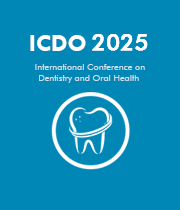Title: Evaluation of remineralizing capacity of tricalcium phosphate, nano-hydroxyapatite and ozone remineralizing agents on the artificial carious lesion
Abstract:
Background: Dental caries is a dynamic process. By using therapeutic agents, early, noncavitated lesions and caries limited to the enamel can be stopped or even remineralized. For the remineralization of the initial carious lesion, many nonfluoridated remineralizing agents were investigated. Objectives: An observational study to assess the remineralizing efficacy of tricalcium phosphate (TCP), nano?hydroxyapatite (nHAp) and ozone remineralizing agents on the artificial carious lesion. Methodology: In this observational research, the artificial carious lesion was produced on extracted 40 premolar teeth. Later, remineralizing agents (Group A: nHAp, Group B: TCP, Group C: Ozone remineralizing agents, Group D: Control group (Deionized water) were used to remineralize demineralized teeth. Utilizing the Vickers Hardness Number, the level of demineralization and remineralization was assessed. Later these readings were statistically assessed using the Tukey’s HSD (honestly significant difference) and ANOVA tests in SPSS version 21.0. The P value was set at 0.05 or less. Results: After demineralization, there was a decrease in enamel microhardness values, with 32% in Group A, 26% in Group B, 22% in Group C, and 21% in Group D, respectively. From the baseline to demineralization, there was a statistically significant decrease in microhardness across all groups. After remineralization, Groups A, B, and C experienced an increase in microhardness while Group D experienced no changes. This showed that Group A had the highest remineralization percentage, followed by Group B and Group C. Conclusion: nHAp and TCP had the greater remineralizing ability, which can be used to manage initial carious lesions.



